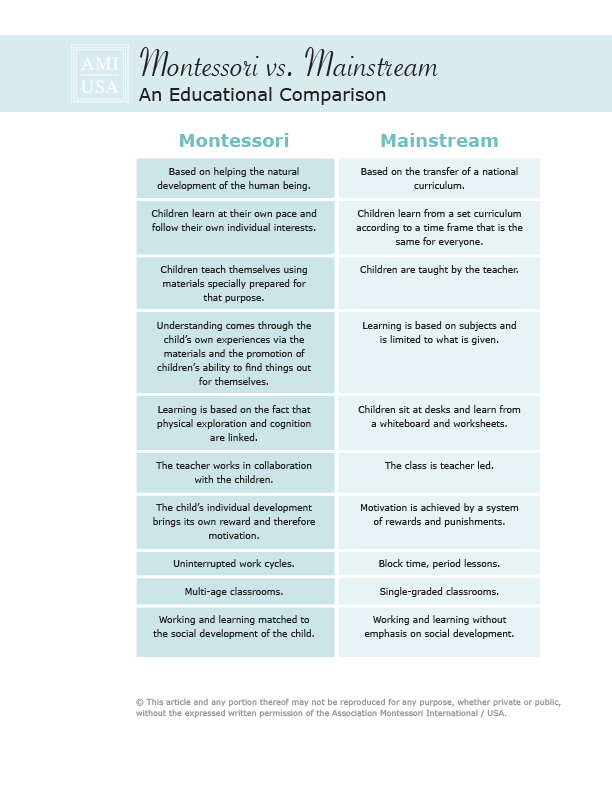Dr Maria Montessori was an Italian doctor and scientist who founded the Montessori Method. She believed that children will develop self-confidence, a sense of inquisitiveness and creativity, and all of the skills needed for success in life when they are given the freedom to choose learning activities based on their own interests and curiosity. In traditional classrooms, the teacher is the source of knowledge. In our Montessori classrooms, the children learn by doing and are guided toward active hands-on experiences by our teachers. Take a look at what a Montessori classroom looks like in these videos:
More on Montessori
Inside Montessori Schools:
Montessori in Action:
Parents love the nurturing Montessori environment for their children because it cultivates independence but also a sense of interdependence in the school community. Children learn right from wrong, strengthen empathy, and are challenged to be the best they can be. In a traditional setting reward and punishment are used to produce a behavioral outcome in children. This results in the child relying on external factors to make the right choice and it suppresses self-confidence because the reward is external. Our school uplifts children to be their best selves by giving them the opportunity for success!
Child-led activities help them set their own next challenge (one that is reasonable and attainable). When they achieve success, they feel an internal sense of accomplishment. Over time, these daily opportunities for success become the child’s lens through which they see their own capabilities. They know that if they keep trying, they will succeed, and they do. See why parents love seeing their childrens’ love of learning nurtured with the Montessori method in the following videos:
Montessori Madness, A Parent to Parent Argument for Montessori Education:
Living Montessori: The Parent Perspective:
Nurturing the Love of Learning: Montessori Education for the Preschool Years:
Traditional vs. Montessori
In a traditional early education setting, punishment (time outs) or rewards (sticker charts) are used to motivate children. In our classrooms, a child is never made to feel bad about their actions. We believe that behavior is the manifestation of feelings and needs, and we guide the child toward understanding those needs and feeling so that they can verbally communicate them to their classmates. All children are inherently good, and we help them understand their own goodness so that they can spread love throughout their classroom.
In traditional settings, subjects are often taught in whole-group settings assuming that all of the children are interested, engaged, and ready for that learning. The pace is set by a predetermined curriculum and work is frequently interrupted to go from one activity to the next on a schedule determined by the adult. We value and respect a child’s own sense of pace and we give them the time and space to work on their own self-chosen activity for as long as they need to. Children are not taught by the teacher, they themselves are the active learners. Our teachers act as guides and they model how to use the different works in the classroom.

Learn Even More
Our school is a member of the American Montessori Society. To learn more about the Montessori approach to early learning, you can visit the American Montessori Society’s website by clicking the link below.
